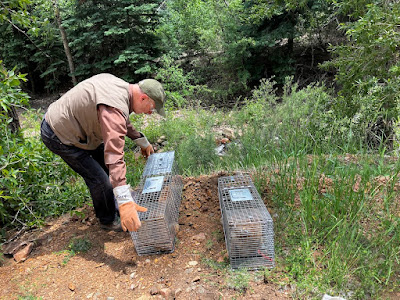What a change a week makes. Last week my email blew up with responses to the possible sale of public lands in the West, thanks to language inserted in the "Big Beautiful Bill" by Senator Mike Lee (R-
Deseret).
Now the bill has passed and been signed by the president but without that language, thanks to a huge outcry by organizations and ordinary Westerners (and others).
(I don't like huge "omnibus" bills on principle, because who knows what horrors lurk on page 635, but apparently Pres. Trump wanted One Big Bill as a part of the "shock and awe" tactic he has adopted in his second term.)
Backcountry Hunters & Anglers was one of the most involved groups, but as the graphic suggests, it was a multi-headed effort.
“This win belongs to the hunters, anglers, and public
landowners who stood up and said loud and clear: Our lands are not for
sale,” said Patrick Berry, BHA President and CEO. “BHA members flooded
the phone lines, sent emails, rallied their communities, and kept the
pressure on until this provision was pulled. We didn’t just show up—we
led the charge.”
Some crisis is always invoked to justify taking public lands away. "States can manage them better" was the war cry of the 1980s "Sagebrush Rebellion" during the so-called Energy Crisis. What that really meant was that it would be easier for oil companies etc. to influence state legislators while it would be harder for conservation groups to fight battles in Montana, Wyoming, Utah, Colorado, etc all at once.
Now the war cry is "housing." But at this map that shows the lands identified for sale in Senator Lee's proposal. Housing for cities? For ski-town workers? Or for mountain mini-mansions? Lost forever to hunters, campers, etc.
Condos are often the first step on the home-ownership ladder, but Colorado, for instance, killed condo building by piling too much legal liability risk on builders. So they just stopped building. This year the legislature tried to undo its stupidity with "Governor Pudge" proclaiming that the new "Construction Defects Law, Ending Years of Gridlock to Build Housing People Can Afford."
Resort towns zone for big houses on big lots while the workers sleep in their cars.
Selling public lands will never be "the fix," but you can bet someone will propose it again. How about brand-new high-tech cities in the desert?
The always-radioactive idea of selling off
federal land comes and goes from Mesa County [western Colorado] and the environs, where 3
out of every 4 square feet of the high desert is owned by a government.
Biting off a piece of forlorn pasture next to a highway exit for an
apartment building may be controversial, though it has been done.
But when the proposals started flying this month for everything from
selling the popular Lunch Loops bike trails, to plunking 150,000 new
residents down onto a no-rules “Freedom City” of the sage, the tech-bro
think tanks floating the edgy concepts are finding that the practical
folks of the Western Slope have a few questions.
There will be more, you can bet on it.





.jpeg)
